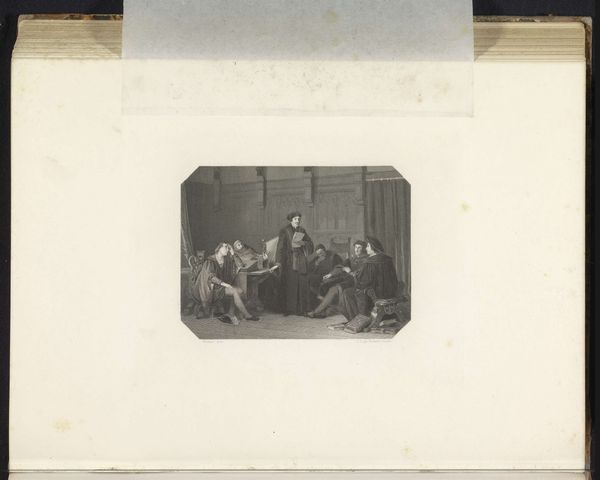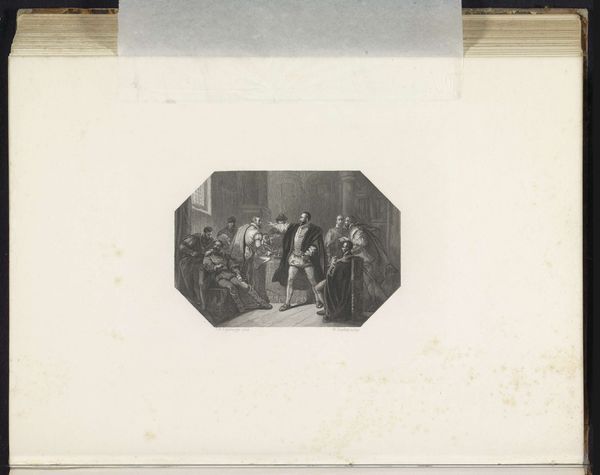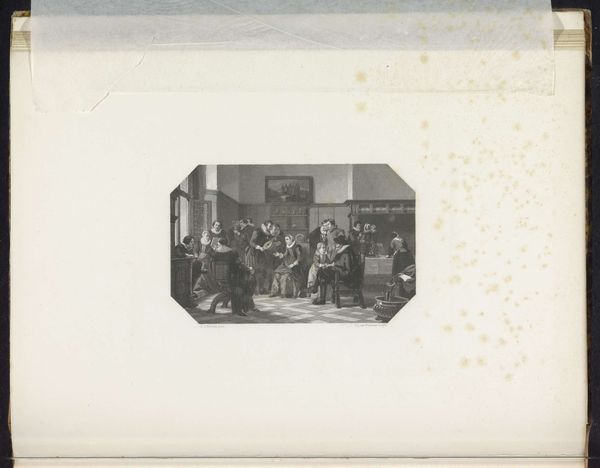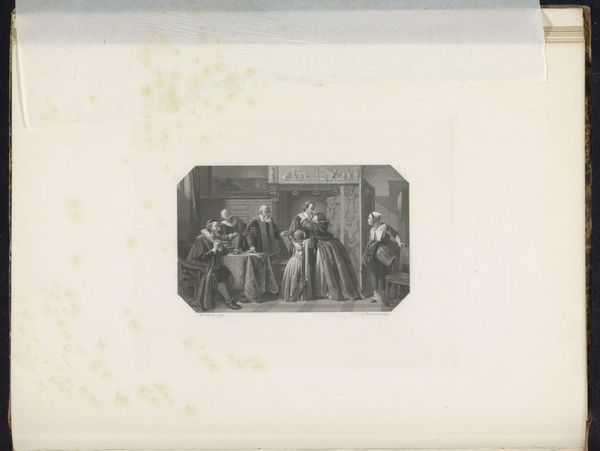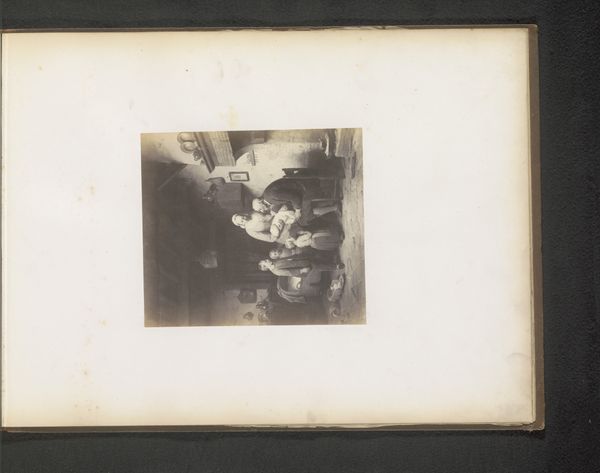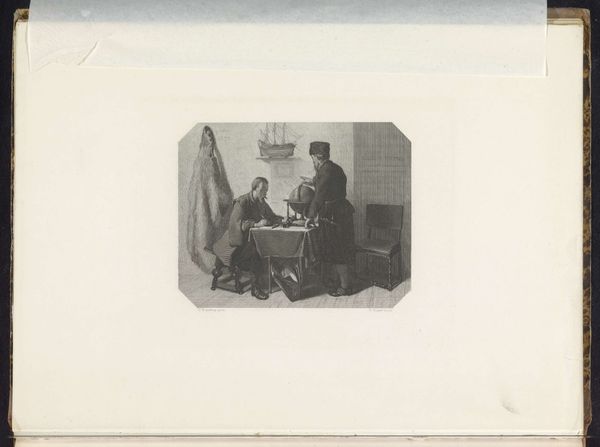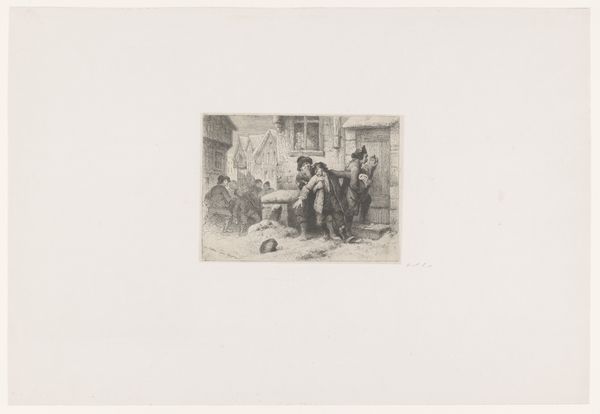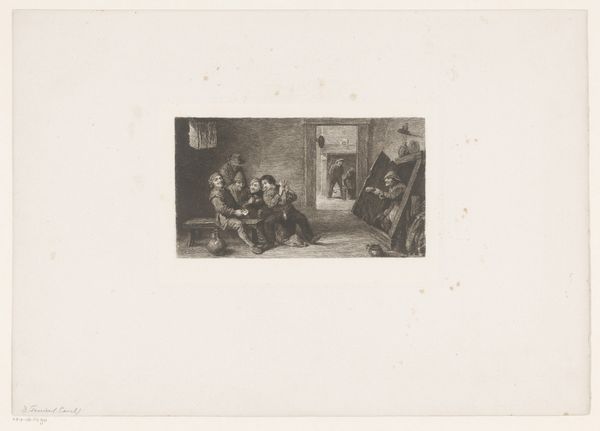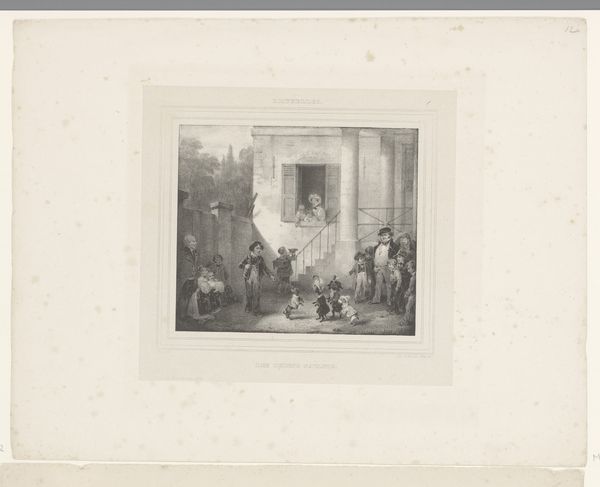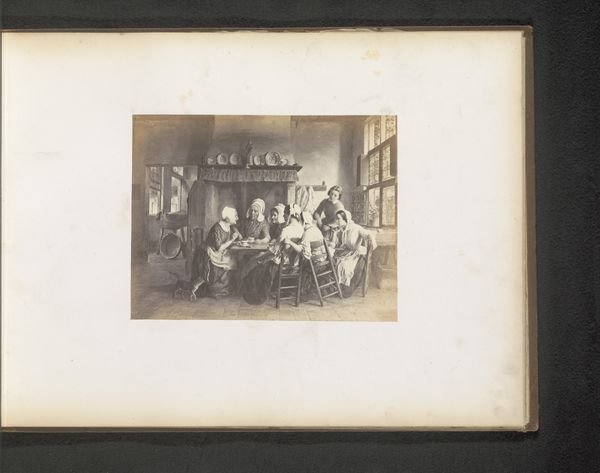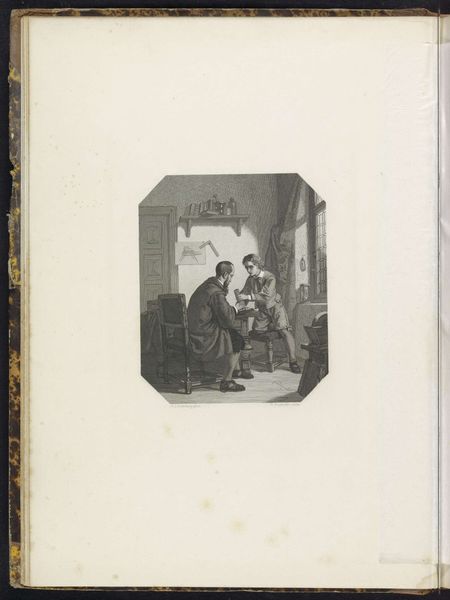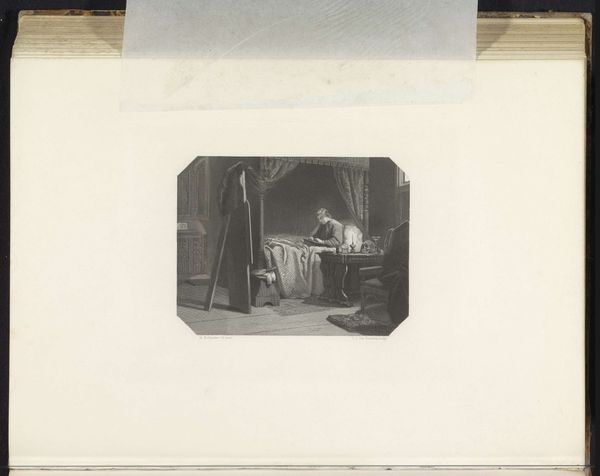
drawing, pencil
#
portrait
#
drawing
#
sculpture
#
charcoal drawing
#
pencil
#
genre-painting
#
academic-art
#
charcoal
#
modernism
#
statue
Dimensions: height 190 mm, width 240 mm
Copyright: Rijks Museum: Open Domain
Curator: Let’s discuss "Petrus Camper, ca. 1780", a drawing dating from 1865 to 1870 and held at the Rijksmuseum. The artist is Hendrik D. Jzn Sluyter. Editor: My first thought is, that looks so academic, almost oppressively so. The meticulous detail in the rendering of the skull collection is almost unnerving, not unlike the charcoals used in some séances. What exactly is going on in this darkly lit domestic sphere? Curator: Hendrik Sluyter created this drawing nearly a century after the death of Petrus Camper, a significant figure of the Dutch Enlightenment who focused on anatomy, medicine and natural history. This work situates Camper amongst his intellectual pursuits, highlighting his dedication to empirical observation. The skulls arranged before him represent the raw materials of scientific inquiry in his day. Editor: And such raw materials they are! Charcoal and pencil drawings like this demonstrate the value and role of such materials. Look at the cross-hatching that suggests the soft gradations in light across those lifeless skulls, a sharp reminder that art materials are not simply neutral tools. And what about the domesticity of it all, and how does that speak to scientific research being carried out in the "comfort" of a parlor? It reminds me how profoundly class affects labor and the consumption of knowledge itself. Curator: Exactly, the placement within a domestic setting, surrounded by books and artifacts, reflects Camper’s elevated status. But beyond that, the work echoes the historical context in which it was made—during a time of growing professionalization in scientific and artistic fields. Reproductions like these were becoming popular and circulated knowledge widely to a larger middle-class audience. Editor: Absolutely, and this proliferation shaped knowledge in ways we often ignore. While the content of the research might remain “pure,” access to the research has always remained thoroughly mediated. Look at the composition - dark shadows emphasize the intellectual labor and maybe a suggestion of its inherent difficulty? It underscores the active production of knowledge using rudimentary drawing tools, and thus how material concerns reflect access. Curator: It does invite a more critical gaze upon those tools, doesn't it? Well, this drawing grants us a glimpse into not only one man’s intellectual world, but also into the era that sought to codify, collect, and ultimately disseminate his life’s work for consumption. Editor: An image deeply steeped in the tangible, in materials, and thus in culture and consumption itself! Thank you for guiding us through this rich and provocative image.
Comments
No comments
Be the first to comment and join the conversation on the ultimate creative platform.
